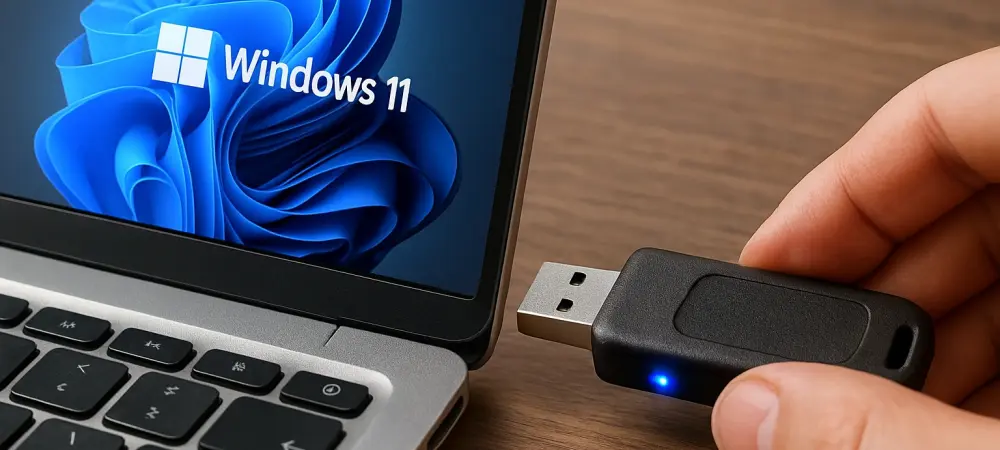Have you ever found yourself stuck in a tech nightmare, desperately trying to recover a malfunctioning computer, only to discover that your keyboard and mouse refuse to respond? This frustrating scenario became a harsh reality for countless Windows 11 users after a recent security update crippled USB functionality in the recovery environment. The glitch turned a critical troubleshooting tool into a brick wall, leaving users stranded without a way to navigate vital recovery options.
The Heart of the Issue: A Recovery Roadblock
The Windows Recovery Environment, commonly known as WinRE, serves as a lifeline for users facing system crashes or critical errors. It’s the digital equivalent of a spare tire—essential when things go wrong. However, a security patch released in October rendered USB keyboards and mice useless within this environment, effectively locking users out of their own rescue system, even though devices worked fine in the regular Windows interface. This disruption hit hard, especially for those relying on WinRE to restore or repair their systems during urgent situations.
The significance of this issue cannot be overstated. With cyber threats on the rise—a recent study noted a 30% increase in malware attacks targeting Windows systems this year—security updates are non-negotiable. Yet, when these patches inadvertently break core functionalities like recovery access, the balance between safety and usability is thrown into question. This glitch exposed a critical vulnerability in the update process, affecting everyone from individual users to large enterprise networks.
Unpacking the Culprit: A Security Update Gone Awry
The trouble began with the October security update, identified as KB5066835, which aimed to fortify Windows 11 against emerging threats. Instead, it introduced an unexpected flaw, disabling USB input devices specifically within WinRE. This wasn’t a minor inconvenience; it meant users couldn’t select recovery options, input commands, or even navigate menus during a system crisis, turning a safety net into a dead end.
Feedback from the user community poured in almost immediately, with forums buzzing about the sudden loss of control in recovery mode. Tech support teams reported a spike in queries, with many users unaware that the issue stemmed from the latest patch. The incident highlighted a broader concern in the software industry: the risk of rushed updates disrupting essential features, even as they aim to protect against external dangers.
Swift Action: Microsoft’s Emergency Fix
Microsoft didn’t let the problem linger for long. After acknowledging the USB glitch in the release notes under Known Issues for KB5066835, the company moved quickly to address user concerns. On October 14, an out-of-band update labeled KB5070773 was deployed, designed to restore USB functionality in WinRE while preserving all prior security enhancements from the original patch. This cumulative fix targeted a wide range of affected systems, from personal laptops to enterprise workstations.
The rapid response showcased Microsoft’s ability to pivot under pressure. User reports were the catalyst, with the company closely monitoring feedback channels to confirm the scope of the issue. Within days, the update rolled out globally, ensuring that those stuck in recovery limbo could regain control. This move not only patched a technical flaw but also sent a message about prioritizing user experience in critical moments.
Building Trust: Transparency in Crisis Management
Beyond the technical fix, Microsoft’s handling of the situation stood out for its clarity and accountability. Updated release notes provided detailed explanations of the glitch and the subsequent solution, ensuring users weren’t left in the dark. Tech analysts have noted this openness as a benchmark for software giants, with one industry expert commenting, “Responding to bugs with speed and honesty is how you maintain loyalty in a skeptical user base.”
A small business owner, who relied on WinRE to recover a crashed system during a peak sales period, expressed relief at the swift resolution. “Losing access to recovery tools was a disaster waiting to happen,” they shared. “The quick update saved hours of downtime.” Such stories underscore the real-world stakes of software reliability and how transparent communication can turn a potential PR crisis into a trust-building moment.
Hands-On Help: Workarounds for the Stranded
For users unable to install the KB5070773 update directly due to the very nature of the WinRE glitch, Microsoft outlined several practical alternatives. Those with touchscreen devices can utilize the on-screen keyboard to navigate recovery options, bypassing the need for external peripherals. Alternatively, connecting a PS/2 keyboard or mouse—if the hardware supports it—offers a retro but effective workaround for older systems.
For others, booting from a previously created USB recovery drive can restore functionality within WinRE, allowing users to sidestep the USB input issue entirely. Enterprise environments and OEMs have access to advanced options like Preboot Execution Environment (PXE), tailored for large-scale recovery needs. These diverse solutions reflect a thoughtful approach, catering to varying levels of technical expertise and hardware setups across the user base.
Looking Back, Moving Forward
Reflecting on the incident, Microsoft’s response to the Windows 11 USB glitch in WinRE proved to be a defining moment in balancing security with functionality. The emergency update, KB5070773, addressed a critical barrier that had left users vulnerable at their most desperate hour. Additionally, the array of workarounds provided a safety net for those caught in recovery limbo, demonstrating adaptability in crisis management. Looking ahead, this episode serves as a reminder for users to stay proactive—keeping recovery drives updated and exploring hardware alternatives can prevent future headaches. For the tech industry, it underscores the need for rigorous testing before updates go live. As Windows systems evolve, ensuring that patches enhance rather than hinder user experience remains a priority worth pursuing with unwavering focus.

